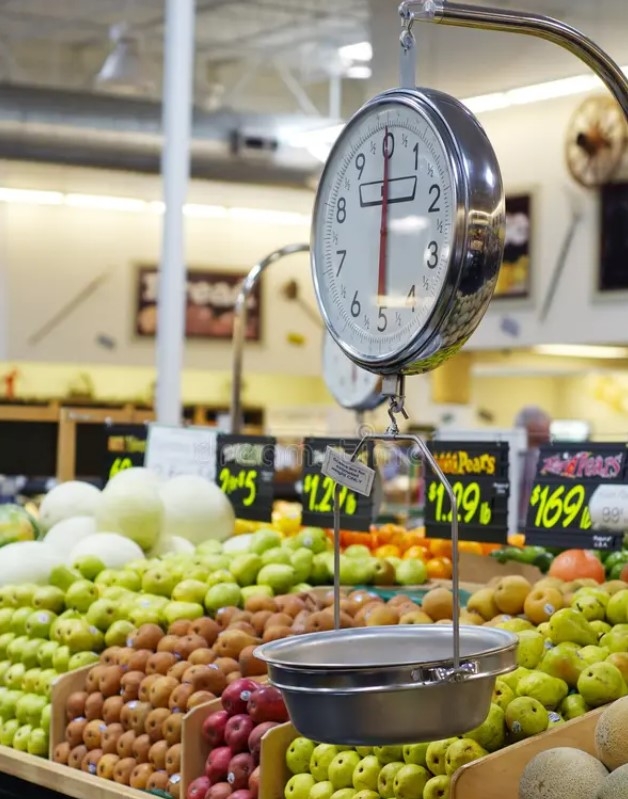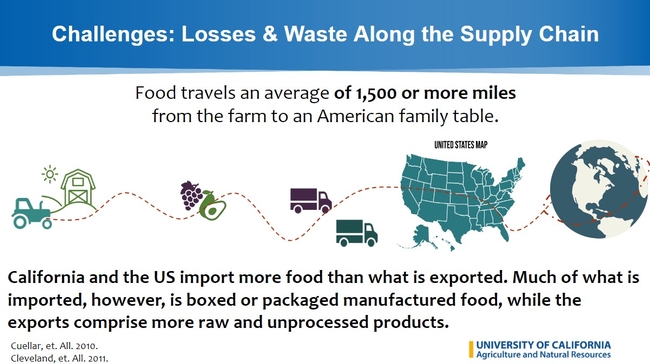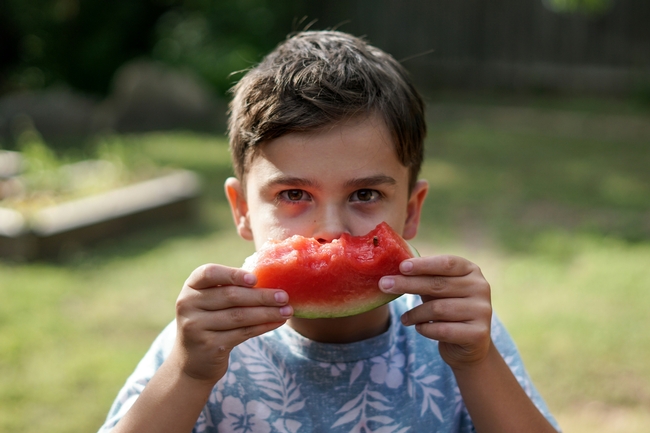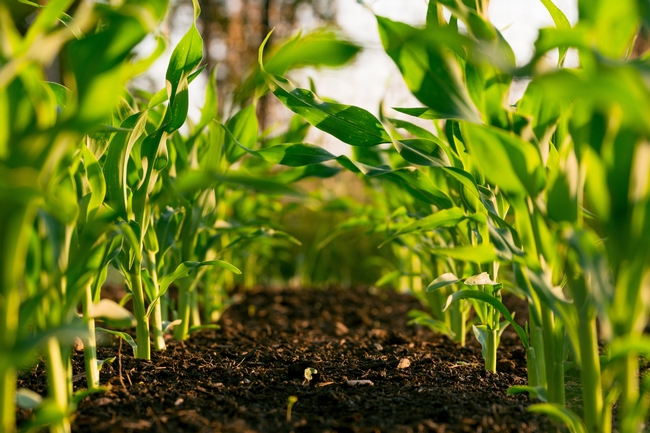Tackling Food Waste for Climate Resilience
Reducing food waste is a critical strategy for addressing food insecurity, mitigating climate change, and enhancing economic productivity. Achieving the goals set by the United States Department of Agriculture (USDA) and the United States Environmental Protection Agency (US EPA) in the National Strategy for Food Loss and Waste, which seeks a 50% reduction by 2030, requires collaborative efforts across the entire foodshed[i]. Farmers, producers, distributors, retailers, grocers, and consumers must work together to build a sustainable, equitable, efficient, and circular food system that supports community resilience.
The Scale of Food Waste and Loss in the U.S.
According to ReFed, a national nonprofit policy and research collaborator, nearly 89 million tons of food products are lost or wasted annually in the U.S. resulting in a $470 billion economic loss (~$1,000 per person per year), equivalent to 2% of the U.S. Gross Domestic Product (GDP)[ii]. This presents significant environmental, social, and economic challenges, drawing increasing scrutiny from environmental scientists, policymakers, and the public.
In the U.S., food waste and loss occur throughout the food supply chain; however, approximately 30% of the 240 million pounds of surplus food is lost during production—such as food left behind after harvesting and losses in wholesale distribution—while nearly 70% is wasted at the retail and consumer levels (ReFed). Food production generates nearly 5 kg of carbon dioxide (CO2) per person daily and contributes to about 40% of methane and 80% of nitrous oxide emissions[iii]. These emissions equate to the energy used to charge 40 trillion cell phones or power 145,000 gas-powered vehicles[iv]. The EPA's "Equivalency Calculator" offers educators tools to convey these climate impacts more effectively. More details are available here.
Causes of Food Loss and Waste
The causes of food waste and loss are multifaceted, spanning the entire food supply chain. For example, at the consumer level:
- Strict Food Safety Standards can lead to misunderstanding of food safety regulations and the lack of standardized food date labeling contributes to waste.
- Consumer Behaviors and high standards for appearance, freshness, and variety can lead to unintended waste.
- Retail and Consumer Waste consisting of unsold "timed-out" products are often discarded rather than repurposed or donated.
- Compost and Organic Waste Programs offered by municipalities intended to meet food waste and organics collection requirements present barriers to some households which lack the resources or knowledge to fully participate.
- Lack of Awareness persists among food manufacturing businesses who can fail to capitalize on existing incentives to reduce food waste.
And, at the production level:
- Inefficiencies in Production include challenges like pest management, irrigation infrastructure, and technology gaps that can lead to food loss.
- Labor Shortages and over-reliance on machinery can result in losses.
- Natural Disasters and extreme weather events such as floods or storms can disrupt harvests and supply chains.
- Market Fluctuations and consumer variable market demand can lead to surplus food that goes unused.
- Storage and Transportation Issues include inadequate cooling and long transport distances which contribute to spoilage.
Food Miles
Food travels an average of 2,000 miles from farm to table[v]. Food miles, and their associated emissions, are calculated using models that factor in distance, food mass, transportation type, and emissions. A report in Nature highlights that food transport emissions contribute 3 gigatons (GT) of CO2e annually, twice the emissions produced during food production[vi].
California exports $20 billion in raw agricultural products annually while importing over $165 billion in mostly processed foods (USDA). Studies, like one from UC Santa Barbara, show that >95% of food produced in regions like California is exported, leaving less than 5% for local consumption[vii]. As globalization concentrates food production, food miles are increasing, impacting not only emissions but also food freshness and nutritional value.
Social Impact
Food waste exacerbates food insecurity. In California, 10.5% of households face food insecurity, with 58% falling below the Supplemental Nutrition Assistance Program (SNAP) qualifications[viii]. And, while nearly 18% of households with children experience food insecurity[ix], the Natural Resources Defense Council (NRDC) reports that one-third of food discarded could feed the nation's food-insecure population[x].
Factors like job loss, medical bills, and other unplanned expenses push residents into food insecurity. In Ventura County, roughly one in twelve residents struggle with food insecurity[xi]. According to Food Share of Ventura County, many clients face difficult choices between paying for food and essential needs like utilities (60%), medical care (30%), or education (30%) (Food Share). Furthermore, farmworkers, who often harvest the nation's food, face food insecurity due to factors such as accessibility and affordability of locally grown produce[xii].
Economic Costs
Annually, food waste in the U.S. leads to a $161 billion loss for consumers, $170 billion for retailers, and $2.6 trillion globally (ReFed). Indirect costs, including those related to greenhouse gas emissions, water security, soil conservation, and biodiversity loss, amount to $805 billion annually[xiii]. Additionally, food insecurity is linked to higher healthcare costs due to the prevalence of chronic diseases like diabetes and heart disease, which disproportionately affect food-insecure households (Feeding America).
Environmental Consequences
Food waste contributes significantly to greenhouse gas emissions. In the U.S., 170 million metric tons (MT) of carbon dioxide and 58 million MT of methane are emitted annually from landfills due to food waste (ReFed; EPA; and USDA). If spread out, wasted food would cover 16% of the more than 90 million acres of farmland in the U.S. It would also consume 22% of the water used in production (ReFed and USDA). Finally, food waste accounts for 25% of landfill space and 2% of U.S. greenhouse gas emissions (ReFed).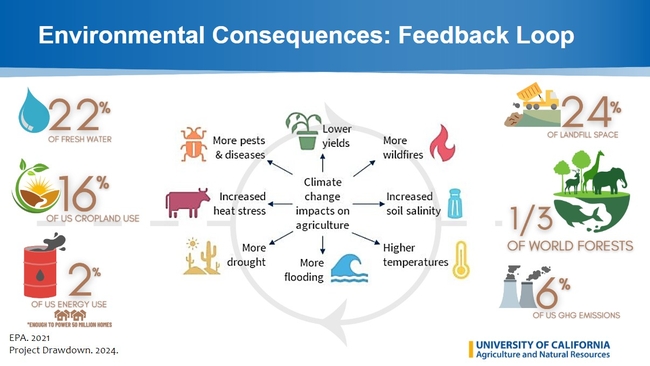
Big Solutions for a Resilient Food System
To combat food loss and waste, a range of strategies has been proposed by policy and research organizations, including the USDA, EPA, ReFed, and many others:
- Education Campaigns raise awareness among consumers and retailers about food waste prevention. Simple actions, like using a shopping list, setting the refrigerator to 40°F, or planning meals using existing pantry items, are some ways to curb waste.
- Donation Capacity will expand food donations to food banks and pantries. Investing in their capacity to handle large, infrequent donations and distribute the recovered food across their pantry network benefits everyone along the food supply chain. Post-harvest gleaning efforts is another way to recover food. To learn more about gleaning, check out the USDA's Let's Glean toolkit. There are also ‘donation-matching' apps that connect food producers (i.e. caterers) to volunteers who can pick-up prepared foods (the hardest to redistribute due to food safety standards) and delivery them to places who have capacity to break into smaller portions and freeze it for later distribution.
- Packaging Redesign addresses the importance of portion control and makes it easier to recycle. Food manufacturers could offer a range of portion sizes to accommodate single-person households.
- Secondary Markets for Produce promote the sale of cosmetically imperfect produce. Misfits Market, Imperfect Foods, and other companies are realizing this untapped market potential.
- Price Markdowns for nearly expired products give consumers and retailers more options to reduce waste. Too-Good-To-Go is a mobile app that allows consumers to purchase marked-down items from retailers who sign-up for the platform.
- Allowing Animal Feed Rescue will increase opportunities for using food waste as animal feed. For example, a pilot study in Ventura County is addressing this issue by matching neighborhood retailers to residents with backyard urban farms (raising chickens, goats, etc.)
- Investing in Composting Technologies and by making community composting more accessible, we can decentralize compost infrastructure, which can reduce heavy-duty truck traffic, decrease emissions, and create healthy compost to revitalize depleted soils.
- Increase construction of waste Transformation Technologies such as anaerobic digestion to create biofuels.
- Increase production of ‘value-added products' such as beers, jams, candies, etc. by working with programs like the Master Food Preserver programs (UCANR).
Small Steps for Big Results
While it is true that individuals alone cannot change the entire food system, each one of us can take small steps toward a more balanced approach to food consumption at home, work, and school. Here are just a few ideas that I find help me get more value out of the food I purchase.
- Make a meal plan for the week by starting with what you already have in your pantry.
- Plan to make two meals out of one large item, like grilled fish with veggies one night and fish cakes and veggie fritters the next. This gives your menu variety, so your family doesn't burn out on leftovers.
- Shop without a cart and two bags. I find I do less impulse buying when I must carry everything through the store.
- If you must buy extra large or bulk items, consider sharing with your neighbors or coworkers to ensure the product will not expire before you can use all of it.
- Invest in food-saving containers for your fridge. While these costs are upfront, in the end they may save your money by keeping food fresh longer.
- Cut portion size! We have become so accustomed to larger portion sizes. Serve smaller portions first and then go back for seconds if so desired.
Embracing a Circular Food Economy
A circular food economy focuses on minimizing waste by keeping resources in use as long as possible, regenerating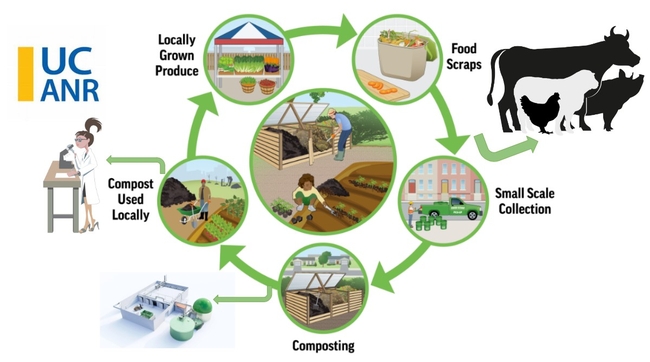
Join us for an online discussion with UC ANR and local leaders working on food waste as it relates to climate change. The event will be online on 11/13/2024. For more details click here.
Thank you for reading! If you have any questions or would like to get involved, please contact Jill Santos at the UC Environmental Stewards Program/UC ANR at jessantos@ucanr.edu.
[i] The White House. National Strategy for Reducing Food Loss and Waste and Recycling Organics. June 2024.
[ii] ReFED. (n.d.). Food waste problem | REFED. Retrieved from https://refed.org/food-waste/the-problem/
[iii] Cuéllar, A. D., & Webber, M. E. (2010). Wasted food, wasted energy: The embedded energy in food waste in the United States. Environmental Science & Technology, 44(16), 6464–6469. Retrieved from https://doi.org/10.1021/es100310d
[iv] U.S. Environmental Protection Agency (EPA). (n.d.) Greenhouse Gas Emissions Equivalency Calculator. (September 2024). Retrieved from Greenhouse Gas Equivalencies Calculator | US EPA.
[v] Food miles: Background and marketing. (n.d.). Retrieved from https://attradev.ncat.org/wp-content/uploads/2022/06/foodmiles.pdf
[vi] Zhu, J., Luo, Z., Sun, T. et al. Cradle-to-grave emissions from food loss and waste represent half of total greenhouse gas emissions from food systems. Nat Food 4, 247–256 (2023). https://doi.org/10.1038/s43016-023-00710-3
[vii] Cleveland, D. A., Radka, C. N., Müller, N. M., Watson, T. D., Rekstein, N. J., Wright, H. V. M., & Hollingshead, S. E. (2011). Effect of localizing fruit and vegetable consumption on greenhouse gas emissions and nutrition, Santa Barbara County. Environmental Science & Technology, 45(10), 4555–4562. https://doi.org/10.1021/es1040317
[viii] Cha, P. (2023, April 25). California's farmworkers and their children are vulnerable to food insecurity. Public Policy Institute of California. https://bit.ly/3BeK8VA
[ix] U.S. Department of Agriculture (USDA). (n.d.) Food Security in the U.S.: Key Statistics https://www.ers.usda.gov/topics/food-nutrition-assistance/food-security-in-the-u-s/key-statistics-graphics/
[x] Gunders, Dana and Bloom, Jonathan. Wasted: How America is Losing up to 40 Percent of its Food from Farm to Fork to Landfill. Natural Resources Defense Council. Second Edition. 2012.
[xi] Food Share, Ventura County Feeding America Food Bank. Retrieved from https://foodshare.com/. Sept. 2024.
[xii] Meade, Mary. Who Feeds the Farmworkers? Green America. Retrieved from https://greenamerica.org/building-people-first-economy/who-feeds-farmworkers. Sept. 2024.
[xiii] The Healthcare Costs Of Food Insecurity. (n.d.). https://www.feedingamerica.org/sites/default/files/2019-07/The Healthcare Costs of Food Insecurity Brief. July 2019.pdf
Attached Images:
